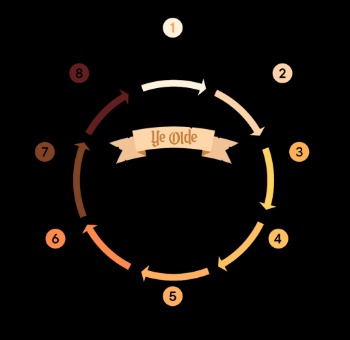Content
This makes it clear how much unlevered free cash flow a company has against its interest expense. In this case, Widget’s unlevered cash flow is more than two times its interest expense, indicating it’s able to meet its interest obligation with money to spare for dividends and stock buybacks, or investing in new business projects. Let’s use the hypothetical Widget Corp., with $75,000 in net income in its most recent year, and the following line items in its financial statements. Interest expense accounts for the difference between unlevered and levered free cash flow.
- The greater the percentage of the original debt principal paid down over the borrowing term, the more the incurred interest expense should decline, all else being equal.
- Secured loans are those loans that involve a pledge of some or all of a business’s assets.
- As of August 11, 2023, Talen had total available liquidity of approximately $840 million, comprised of approximately $140 million of unrestricted cash and a $700 million undrawn revolving credit facility.
- Figure 12.1 “Examples of Cash Flows from Operating, Investing, and Financing Activities” shows examples of cash flow activities that generate cash or require cash outflows within a period.
- It also means they can broaden their valuation of a company beyond market capitalization by including a company’s debt as capital, a measure known as total enterprise value.
Changes in the various current assets and liabilities can be determined from analysis of the company’s comparative balance sheet, which lists the current period and previous period balances for all assets and liabilities. The cash flow statement uses information from your company’s income statement and balance sheet to show whether or not your business succeeded in generating cash during the period defined in the report’s heading. Put simply, your company’s cash flow statement demonstrates how your business generated and used its cash. Your cash flow statement will present your company’s cash inflows and outflows as they relate to operating, investing and financing. The final line of the statement of cash flows will reveal whether your business experienced an increase or decrease in cash in a defined length of time. The operating activities section of your company’s cash flow statement determines whether the net profit or loss reported on your income statement has increased or decreased the amount of your company’s cash flow.
Determining Net Cash Flow from Operating Activities (Indirect Method)
Also known as the statement of cash flows, the CFS helps its creditors determine how much cash is available (referred to as liquidity) for the company to fund its operating expenses and pay down its debts. The CFS is equally important to investors because it tells them whether a company is on solid financial ground. As such, they can use the statement to make better, more informed decisions about their investments.

Although these lines can be reported in various orders, the next line after net revenues typically shows the costs of the sales. This number tells you the amount of money the company spent to produce the goods or services it sold during the accounting How Do The Paid Interest Expenses Present In The Statement Of Cash Flow? period. Identify whether each of the following items would appear in the operating, investing, or financing activities section of the statement of cash flows. Proceeds for bank loan of $4,000 represents additional borrowings during the year.
Alternative Discounting Frequencies
The activity in the accounts receivable and sales accounts is used to determine the cash collections from customers. Accounts receivable decreased by $663 because the company received more cash from its customers than credit sales made by the company. The $663 decrease is added to sales per the income statement of $129,000 to determine the cash collections from customers reported in the cash flow statement of $129,663. This communication contains forward-looking statements within the meaning of the federal securities laws, which statements are subject to substantial risks and uncertainties.
- The two basic sources of capital are borrowed funds from lending institutions and ownership or internal capital representing profits reinvested in the business.
- The owner’s (or shareholders’) equity is the difference between the assets and liabilities.
- Therefore, cash is not the same as net income, which includes cash sales as well as sales made on credit on the income statements.
- While each company will have its own unique line items, the general setup is usually the same.
- Let’s say that shareholder equity (E) for the year 2030 will be $4.2 billion and the long-term debt (D) stands at $1.1 billion.
- Being able to understand the value of your future cash flows by calculating your discount rate is similarly important when it comes to evaluating both the value potential and risk factor of new developments or investments.
Investing in one is a risk, and investors need to know that the value of your cash flows will hold not only now but also later. It is comprised of a blend of the cost of equity and after-tax cost of debt and is calculated by multiplying the cost of each capital source (debt and equity) by its relevant weight and then adding the products together to determine the WACC value. A P&L is arguably the most important financial sheet your small business has. It shows the company’s net income over a period of time, which can be monthly, quarterly, or yearly. It’s up to you, as the business owner, to determine how often you want to create a P&L. Choose a frequency that will help you see the overall picture of how the business is doing and how it can improve.
Create a free account to unlock this Template
A business’ cash flow statement should show adequate positive cash flow for its operational activities. If it doesn’t, the business may find it difficult to manage its daily business operations. Interest expense refers to the cost of borrowing money and includes a company’s interest payments on any bonds, loans, convertible debt, and lines of credit.
- Thus, because demand for credit will continue to expand, careful credit planning and credit use decisions are of paramount importance to marketing companies in any country.
- IAS 7 Statement of Cash Flows requires an entity to present a statement of cash flows as an integral part of its primary financial statements.
- The converse process in discounted cash flow (DCF) analysis takes a sequence of cash flows and a price as input and as output the discount rate, or internal rate of return (IRR) which would yield the given price as NPV.
- Decreases in current assets indicate lower net income compared to cash flows from (1) prepaid assets and (2) accrued revenues.
- At the top of the income statement is the total amount of money brought in from sales of products or services.
- The issuance of debt is a cash inflow, because a company finds investors willing to act as lenders.
- If a company buys a piece of machinery, the cash flow statement would reflect this activity as a cash outflow from investing activities because it used cash.
If a company has an inventory turnover ratio of 2 to 1, it means that the company’s inventory turned over twice in the reporting period. To calculate EPS, you take the total net income and divide it by the number of outstanding shares of the company. When you subtract the returns and allowances from the gross revenues, https://kelleysbookkeeping.com/ you arrive at the company’s net revenues. It’s called “net” because, if you can imagine a net, these revenues are left in the net after the deductions for returns and allowances have come out. Assume your specialty bakery makes gourmet cupcakes and has been operating out of rented facilities in the past.
Operating Activities
It is widely used throughout economics, financial analysis, and financial accounting. Cash flows from financing activities always relate to either long-term debt or equity transactions and may involve increases or decreases in cash relating to these transactions. Stockholders’ equity transactions, like stock issuance, dividend payments, and treasury stock buybacks are very common financing activities. Debt transactions, such as issuance of bonds payable or notes payable, and the related principal payback of them, are also frequent financing events.

Although this brochure discusses each financial statement separately, keep in mind that they are all related. The changes in assets and liabilities that you see on the balance sheet are also reflected in the revenues and expenses that you see on the income statement, which result in the company’s gains or losses. Cash flows provide more information about cash assets listed on a balance sheet and are related, but not equivalent, to net income shown on the income statement. And information is the investor’s best tool when it comes to investing wisely. This information shows both companies generated significant amounts of cash from daily operating activities; $4,600,000,000 for The Home Depot and $3,900,000,000 for Lowe’s. It is interesting to note both companies spent significant amounts of cash to acquire property and equipment and long-term investments as reflected in the negative investing activities amounts.
The details are important because they also show potential lenders if the business can pay its debts. The NPV includes all relevant time and cash flows for the project by considering the time value of money, which is consistent with the goal of wealth maximization by creating the highest wealth for shareholders. The rate used to discount future cash flows to the present value is a key variable of this process. They need to gauge their cash flow so they can pay all operating expenses, have enough left to run the business, and pay off any debts to lenders. Let’s remember that provisions intend to impact today’s P&L in anticipation of a likely expense in the future.

At such times, investors and analysts pay particularly close attention to solvency ratios such as debt to equity and interest coverage. These figures can also be calculated by using the beginning and ending balances of a variety of asset and liability accounts and examining the net decrease or increase in the accounts. Changes in cash from investing are usually considered cash-out items because cash is used to buy new equipment, buildings, or short-term assets such as marketable securities. But when a company divests an asset, the transaction is considered cash-in for calculating cash from investing. Under U.S. GAAP, interest paid and received are always treated as operating cash flows.

